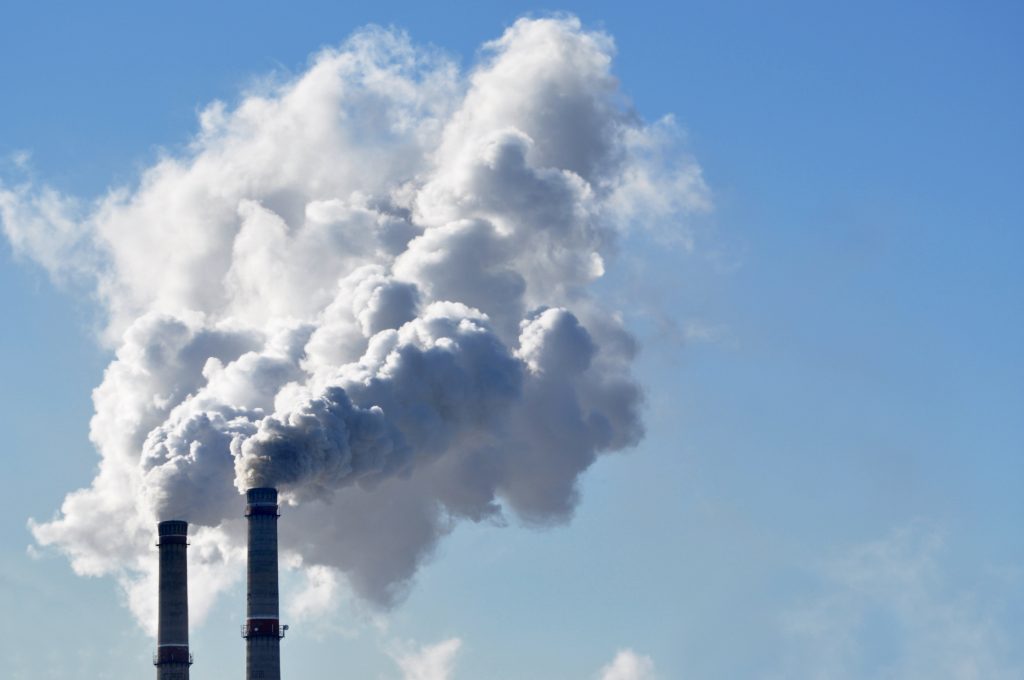View Clean Wisconsin’s Analysis here.
It’s considered one of the most dangerous types of pollution in our environment. Particulate matter—tiny airborne particles about 30 times smaller than the diameter of a human hair—can penetrate deeply into the lungs and make its way into a person’s bloodstream. These fine particles are usually formed through chemical reactions that happen in the air when pollutants like sulfur dioxide and nitrogen oxides are released by fossil fuel-burning power plants, manufacturing plants and vehicles. Elevated exposure to particulate matter air pollution shortens lives, increases cancer risk and contributes to heart attacks, respiratory problems, and strokes.
“Particulate pollution is one of the most harmful environmental pollutants,” says Clean Wisconsin Staff Scientist Paul Mathewson. “It’s so pervasive and widespread. It is one of the largest drivers of adverse health outcomes from environmental exposure that there is.”
A recent study led by Dr. Christopher Tessum at the University of Illinois, in collaboration with researchers at the Universities of California, Minnesota, Texas and Washington, calculated fine particulate matter exposure among different racial-ethnic groups in the United States and examined an array of pollution sources, including fossil fuel combustion for electricity, fuel combustion for transportation, agriculture and industry. The study found that nationwide, people of color are exposed to more particulate air pollution from all major sources than white residents.
Clean Wisconsin analyzed data from that study, focusing in on the Wisconsin-specific data. The results of that analysis are concerning.
“Wisconsin has one of the largest racial disparities in the nation when it comes to exposure to dangerous particulate matter,” says Mathewson, who conducted the analysis. “People of color in Wisconsin are exposed to 26 percent more dangerous particulate matter than the state average. The largest disparity was with Black residents, who are exposed to about 41 percent more fine particulate pollution than the average.”
The analysis shows Wisconsin has the third-highest racial disparity in the country for particulate matter exposure from all sources, behind New York and Pennsylvania. Transportation and industrial sources are the largest contributors to this problem in Wisconsin. Even more troubling, Wisconsin has the largest disparity in the nation when it comes to exposure from industrial sources, like boilers that burn wood, coal or natural gas.
“People of color in Wisconsin are exposed to 44 percent more particulate matter pollution from industrial sources than the state average, with Black residents in particular exposed to 67% more pollution,” Mathewson says. “The Milwaukee area has by far the largest disparity, but it persists in other major cities examined in the study including Green Bay, Appleton, Wausau and Sheboygan.”
Experts with the Wisconsin Environmental Health Network say the findings should be cause for alarm.
“It is shocking that Wisconsin has the 3rd highest racial disparity in the country for exposure to particulate matter, disproportionately killing black residents. Doctors can only do so much. We must have better public policy to reduce industrial and transportation sources of fossil fuel burning,” says Dr. Claire Gervais, Clinical Associate Professor with the University of Wisconsin Department of Family Medicine and Community Health.
“Fine particles are able to evade the body’s defenses for keeping junk out of the lungs,” says Dr. Jed Downs, an osteopathic manipulative therapy specialist in Fitchburg, Wis., “These particles settle out deep in the air sacs where they can damage the walls of the sacs.” When the reaction is dramatic enough, the individual will have an asthma attack or an exacerbation of other pre-existing lung problems. The particles can then enter the blood stream which can promote inflammation and clotting leading to stroke and heart attack in susceptible individuals.”
Mathewson says this kind of technical research helps guide Clean Wisconsin’s environmental advocacy work by identifying and prioritizing pollution sources that are harming Wisconsin communities. Working to reduce pollution from these sources will result in a cleaner, healthier environment for everyone.
“There are so many issues related to particulate matter exposure. It shortens lives and causes a variety of health problems. It’s incredibly important that we understand which communities are being hurt by this exposure the most and focus our efforts the sources contributing the most to the problem.”
Key Study Takeaways:
- Industry, transportation and agricultural sources are the largest contributors to particulate matter pollution in Wisconsin for all racial-ethnic populations.
- People of color (POC) are exposed to higher-than-average particulate pollution from all sources examined, while white residents are exposed to lower-than-average pollution from all sources.
- Transportation and industrial sources were the primary contributors, accounting for 58% of the disparity.
- POC residents in Wisconsin experience the third largest overall exposure disparity in the country.
- POC residents are exposed to 26% more particulate matter pollution than average, with Black residents in particular exposed to 41% more pollution.
- POC residents in Wisconsin experience the country’s largest exposure disparity from industrial sources of particulate pollution.
- Disparities are by far the greatest in the Milwaukee area, but they persist in other urban areas in the state.

